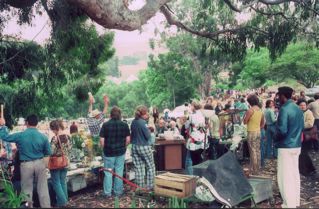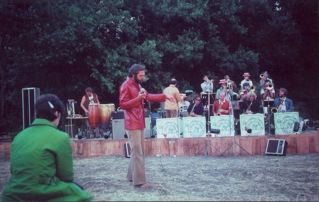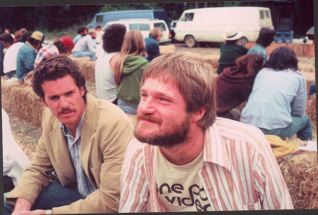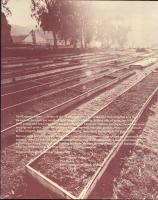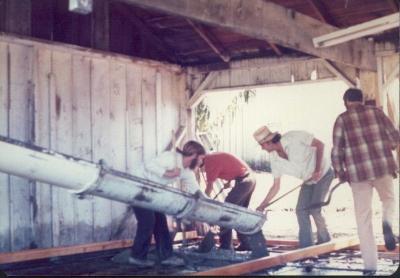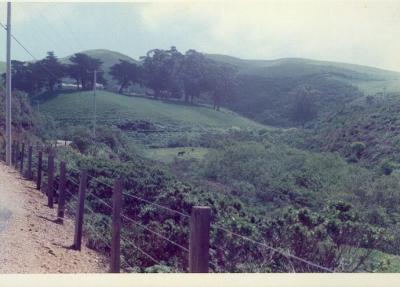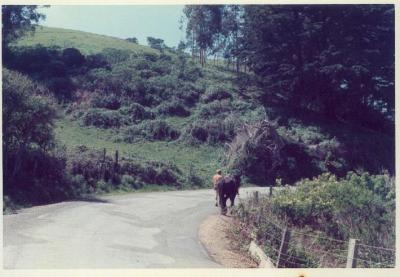In June of 1975, Babi Hari Dass, a spiritual teacher from India visited the Coastside. His appearance was later called “a visual spectacle, comparable to a scene from the movie, ‘Ghandi'”.
The “happening” took place in the lower field of what the locals called “the worm farm” at San Gregorio.
The “worm farmers” (who had traded the glitz of Los Angeles/Beverly Hills for the Coastside’s rustic serenity) were raising earthworms commercially in long, narrow, custom-built redwood planters in a small corner of the several hundred-acre ranch.
Not far from where the earthworms were burrowing in their special soil mixture in a scooped-out section of earth beside a creek, someone had unfurled a bright orange parachute. The colorful covering was protection for the 100 expected guests–a contrast of locals and devoted followers of Babi Hari Dass. They would sit on bales of hay or on pretty Oriental carpets that had been placed on the ground.
A statute of the goddess Kwan Yin, with one palm extended and open, the joined forefinger and thumb forming a circle on the other hand, conveyed a peaceful spirit among the pots of pink and white Sweet Williams.
Special care was taken by all to avoid treading on the large Indian rug, centrally located and reserved for the 51-year-old spiritual guest of honor.
Along with other Coastsiders, I was invited to meet and ask questions of “Babaji” (a term of respect). He was a short, kind-faced, bearded man wearing a long white robe. What was most unusual was that as a practitioner of Astanga Yoga, he had not spoken a word to anyone for 25 years.
“Babaji” communicated by writing on the little chalkboard strung around his neck–or when more words were necessary, he used the larger, portable chalkboard strung around his neck–or when even more words were necessary, he used the large, portable chalkboard that he carried with him.
…to be continued…
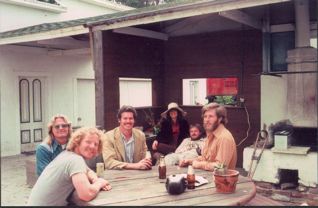 Photo: Woman in hat is me, June, then counterclockwise, Doug St. Denis, Dennis Hart, Unidentified man, John Morrall and Unidentifed man.
Photo: Woman in hat is me, June, then counterclockwise, Doug St. Denis, Dennis Hart, Unidentified man, John Morrall and Unidentifed man.
